WHAT WE ATE
- Original Mazesoba, 90/100 (26 Dec 2023, Plaza Singapura)
- Salmon Miso Ramen, 50/100 (26 Dec 2023, Plaza Singapura)
- Kokoro Tan Tan Men, 85/100 (6 Nov 2021, Plaza Singapura)
- Hojun Tonkotsu Ramen, 75/100 (6 Nov 2021, Plaza Singapura)
- Lekei Ramen, 70/100 (2 Sep 2023, Suntec)
- ‘Super’ Ebi Ramen, 80/100 (2 Sep 2023, Suntec)
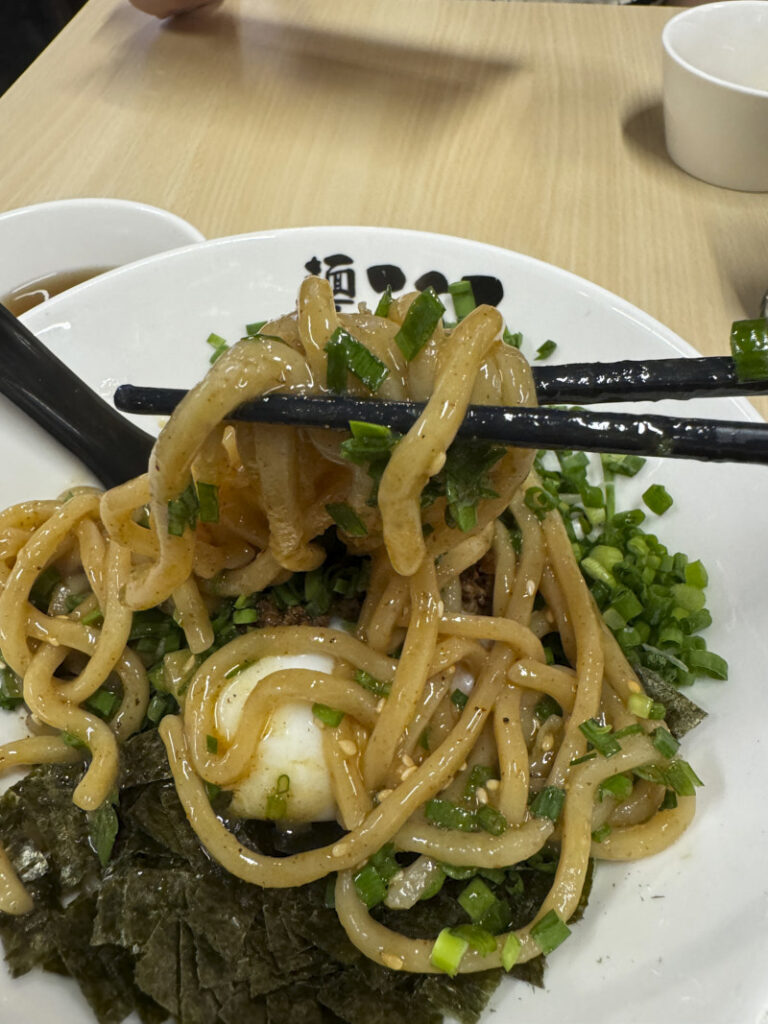


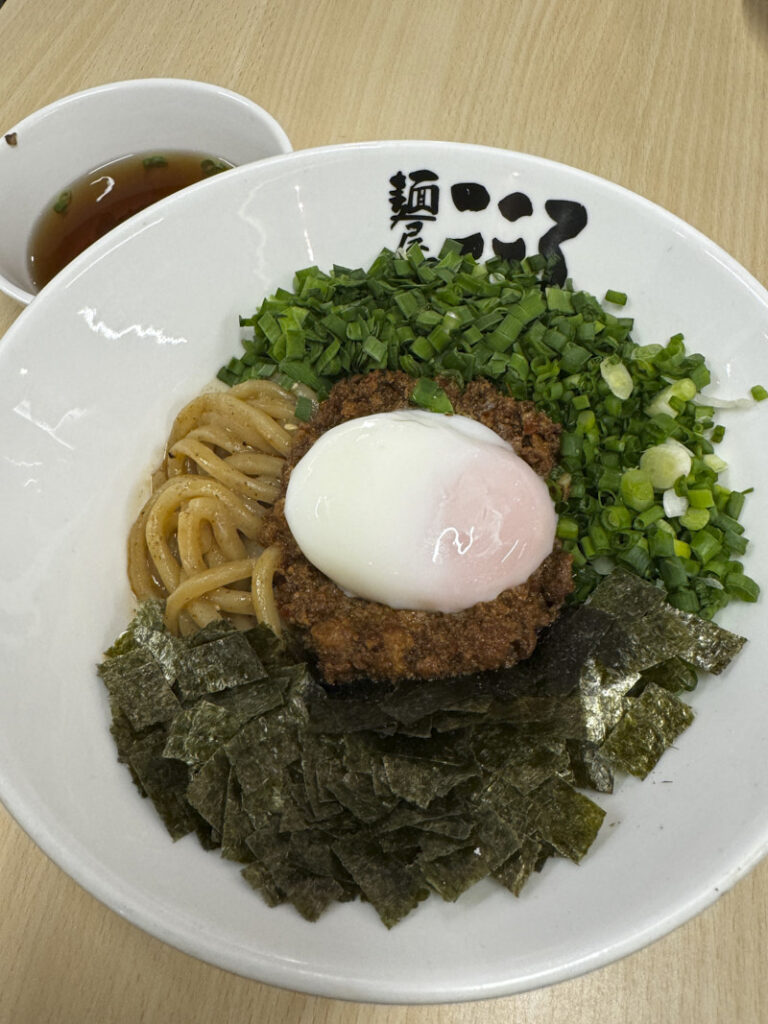
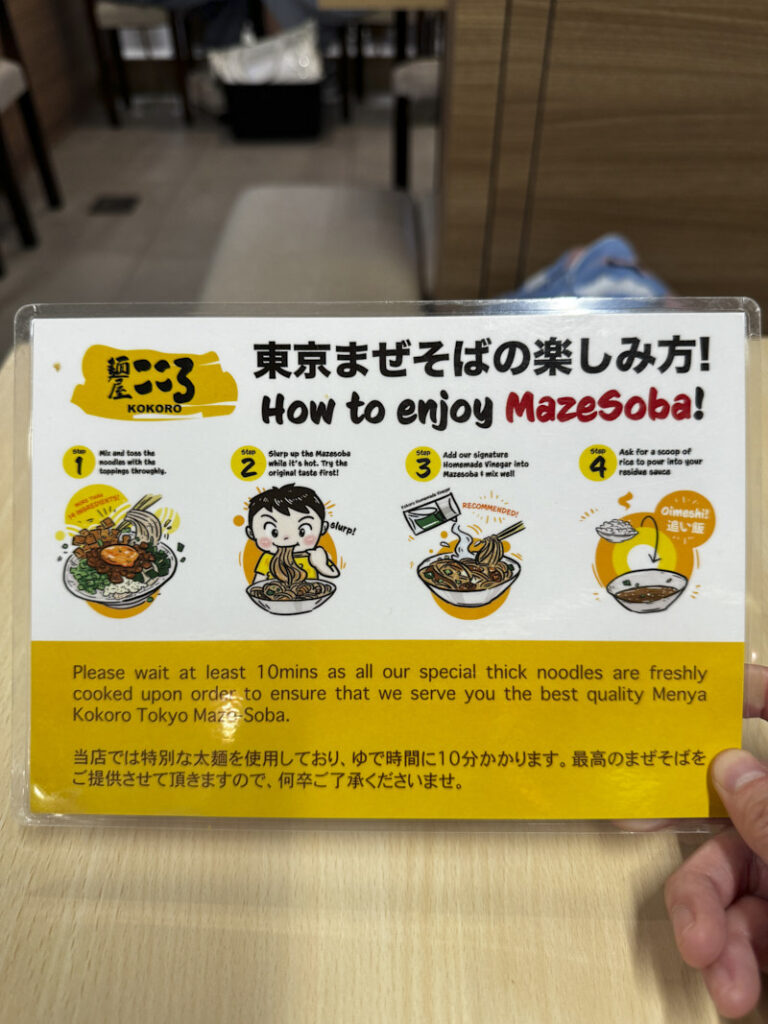
ORIGINAL MAZESOBA – 90/100
Noodles – 35/35
The noodles are thick and kinda ‘udon-ish’, you know, like the ones in Mazesoba or Tsukemen. They’ve got that bouncy, chewy thing going on, giving your mouth that satisfying ‘QQ’ feel. Dense and hearty, they come with a subtle earthy aroma that’s pretty nice.
Sauce – 35/35
Now, the sauce is on the thick and gravy side. It’s a flavor rollercoaster – sweet, sour, salty, and spicy all at once. Starts off with a punch of Bonito and a tangy kick from vinegar, but it doesn’t go overboard. Ends with a lingering spiciness, and there’s this cool complexity with peppercorn and sesame. Honestly, it’s just downright delicious.
Meat – 15/20
The minced meat is marinated to the max. Salty on its own, but it buddies up perfectly with the bold flavors of the dish.
Toppings – 5/10
Toppings are more for the looks than the taste. The seaweed doesn’t stand out much against the powerhouse of sauce and meat. And the Negi could use a bit more crunch and flavor, in my opinion.
And hey, after all that, there’s an extra scoop of rice to mop up the remaining sauce. But let me tell you, it’s just a single scoop.
To balance it out, there’s a small bowl of soup on the side. Light broth, soy sauce, and mushrooms – a chill break for your taste buds after the flavor fiesta of Mazesoba.
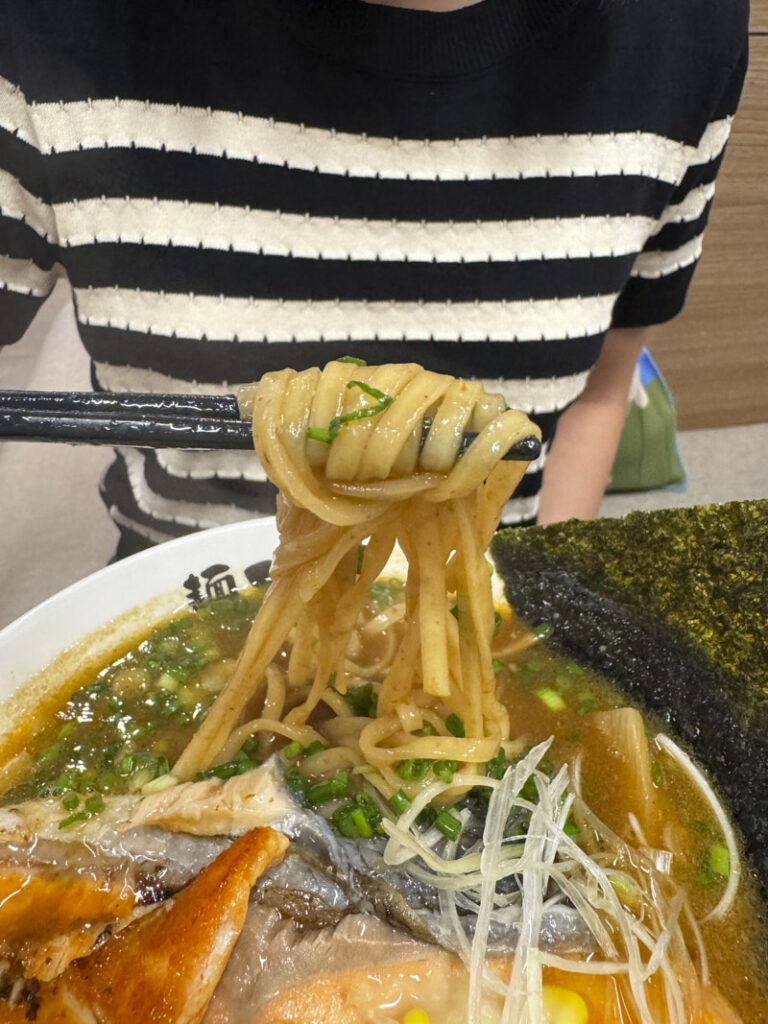
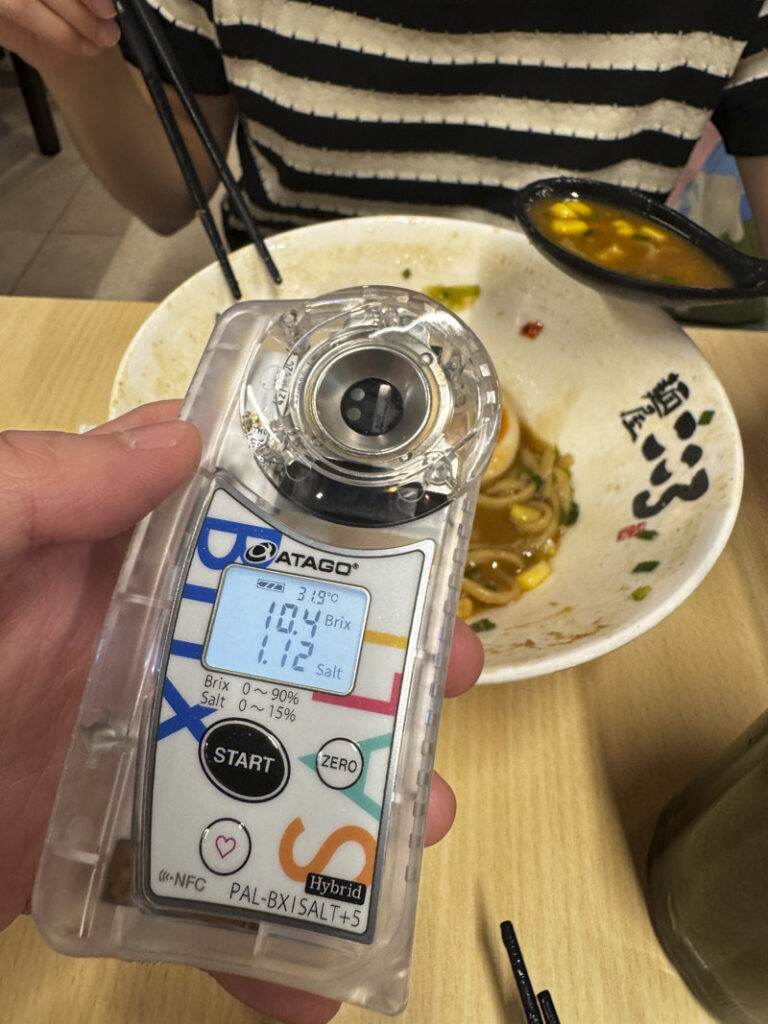
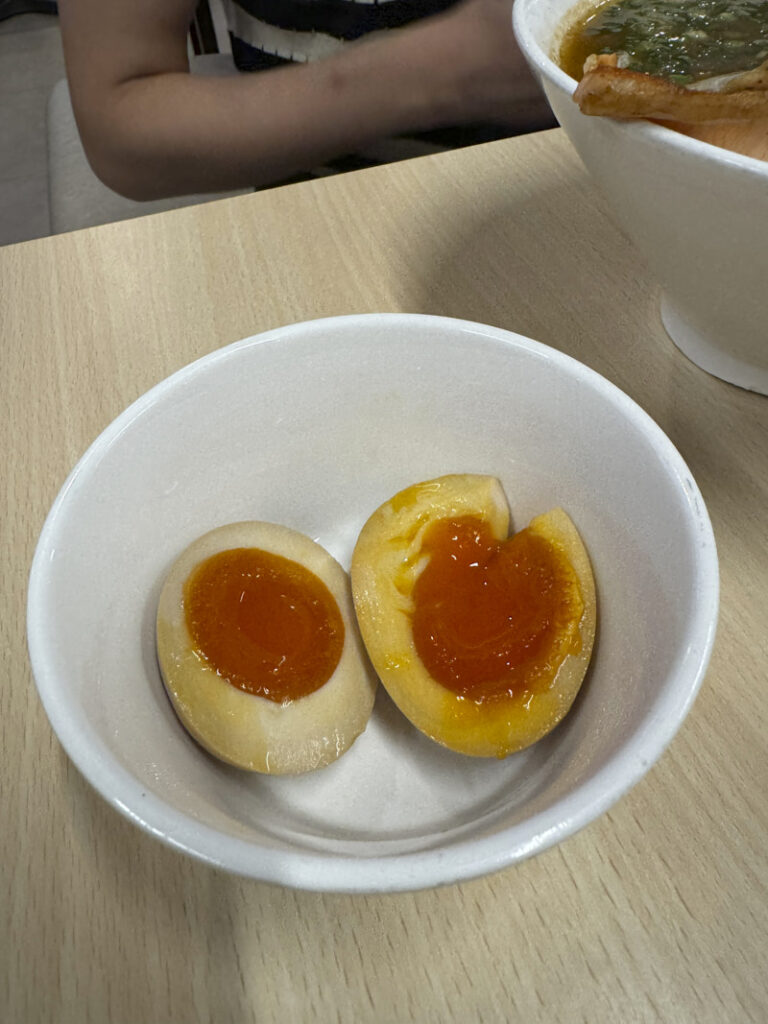

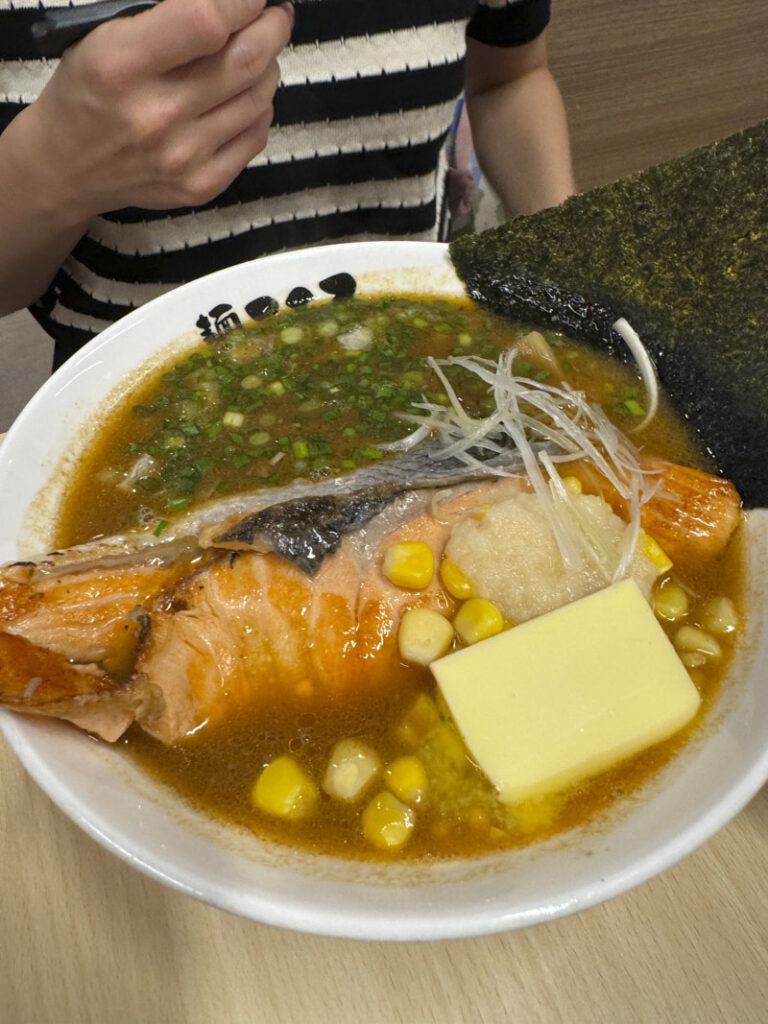
SALMON MISO RAMEN – 50/100
Noodles – 20/35
The noodles in this bowl are on the thin and flat side. The texture is a bit mushier than I prefer, but the taste is decent, with a subtle sweetness.
Soup – 25/35
Now, the soup is rather rich – measured at 10 brix on the refractometer. The miso used here isn’t your typical miso; it brings out more earthy notes amid its sweetness. There’s a mix of bonito and shoyu flavors, and the color leans towards a darker shade compared to the creamier miso ramen varieties.
Meat – 5/20
The salmon seems to be given a bit of a grill (aburi-ed). It’s a tad dry, and the taste doesn’t really stand out. The marination doesn’t quite shine through either.
Toppings – 0/10
The bamboo shoots are a bit too fibrous, but they’re alright in taste. Sweet, yes, but lacking that refreshing kick. The corn is just average and falls short on sweetness.
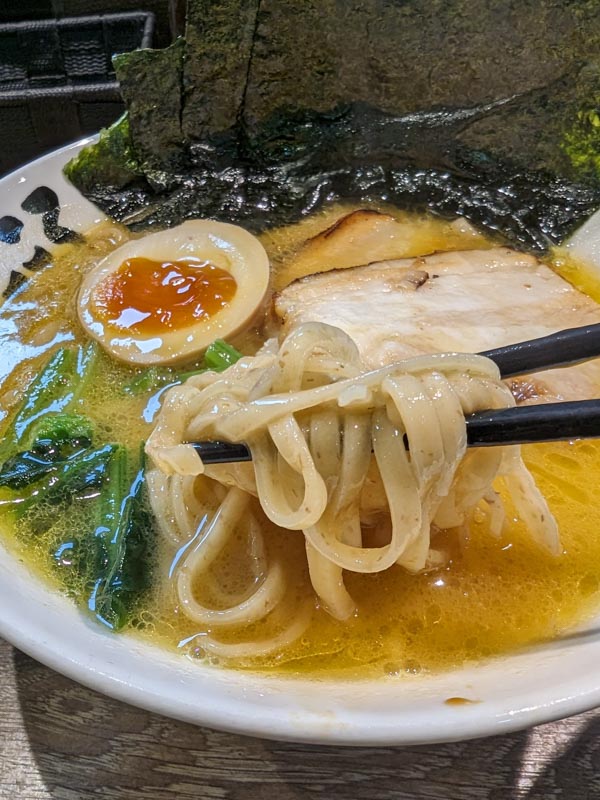




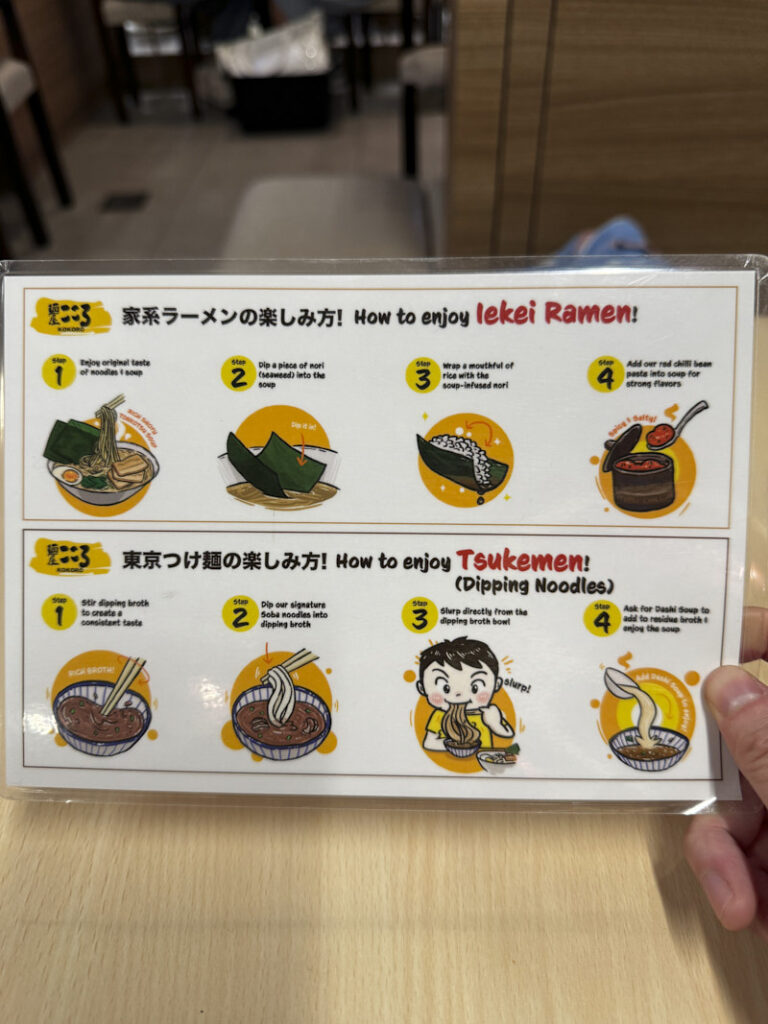
LEKEI RAMEN 70/100
Noodle – 20/35
The noodles here are broad, flat, and thin. They maintain a firm texture but lack that desired bite. Unfortunately, they don’t hold up well in the soup for an extended period. In terms of taste, they carry a subtle wheat flavor without any noticeable kansui taste. However, the rich soup doesn’t quite complement the flat, mushy noodles.
What’s intriguing about this ramen is the choice of noodles. “LEKEI” means “homestyle” or “family-style.” It features a Tonkotsu Shoyu base paired with thick Chinese-style noodles. While these noodles may resemble the “mee-pok” that many Singaporeans are familiar with, they differ from other lekei ramen varieties that typically use thick, round noodles.
In addition to the noodles, you get an extra serving of carbs in the form of a small bowl of rice. Once you’ve finished your main meal, add the rice to the remaining soup and slurp it all up, following the Japanese tradition – it’s surprisingly delicious.
Soup – 25/35
The soup boasts a thick and rich consistency, with a noticeable layer of oil on top. It exudes a delightful Shoyu flavor and a robust sweet and savory essence. Your lekei ramen experience comes with a small pot of chili paste. Depending on how much you mix into your soup, you can enjoy a mild spicy aftertaste or a fiery burn in the throat. Be cautious not to overdo it, so as not to overwhelm the soup.
Meat – 20/20
The chashu, crafted from fatty pork belly cuts with slightly charred edges, is a standout. Even the lean portions are packed with flavor due to their sweet and savory marinade. They’re juicy and become more flavorful as you savor each bite. Surprisingly, the fatty bits are delightful too – slightly chewy but with a pleasant jelly-like texture that delivers a satisfying, clean bite.
Toppings – 5/10
The toppings here are relatively minimal, comprising marinated egg, seaweed, and spinach. The egg and seaweed are quite good, but the spinach leaves much to be desired. Their overcooked, mushy texture and lackluster taste are disappointing.
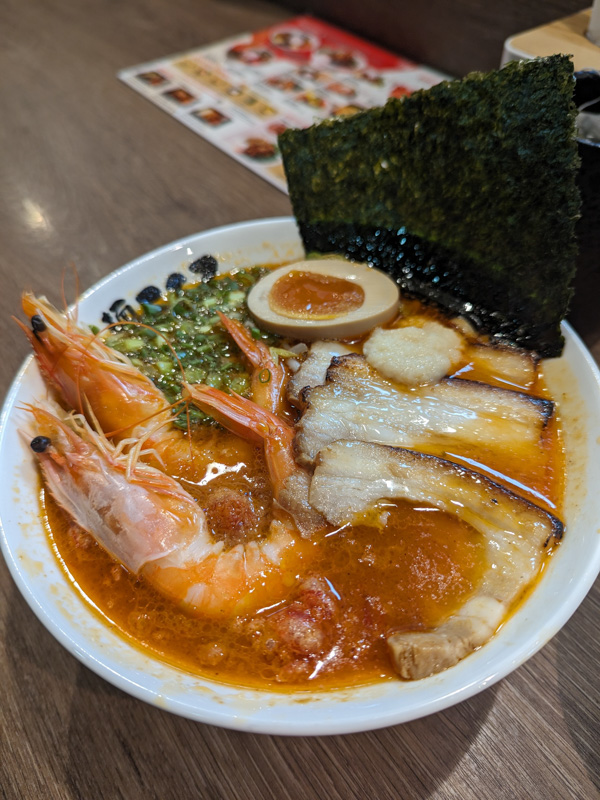


‘SUPER’ EBI RAMEN 80/100
Noodle – 20/35
The same noodles are used here – broad, flat, and thin. They maintain a firm texture but lack that desired bite. However, the rich soup doesn’t quite complement the flat, mushy noodles.
Soup – 30/35
The super ebi ramen features a pure prawn broth expertly blended with rich tonkotsu soup and homemade chili paste for a touch of spice, resulting in a remarkably flavorful combination. It begins with a fiery and ‘choking’ kick, followed by the sweet essence of the prawn broth and the depth of the tonkotsu. Initially, the soup may seem a bit thin, but its flavor intensifies as you continue to enjoy it. The prawn flavor is skillfully handled, devoid of the typical ‘prawn brainy’ odor, delivering a refreshingly delightful soup.
Meat – 20/20
The same chashu is found here – crafted from fatty pork belly cuts with slightly charred edges. The lean portions are packed with flavor. They’re juicy and become more flavorful as you savor each bite. The fatty bits are delightful too – slightly chewy but with a pleasant jelly-like texture that delivers a satisfying, clean bite.
On top of the same chashu is used here, you’ll also get extra prawns. The prawns are peeled and the visual presentation is done nicely. The taste is average for the prawns – nothing special but nothing to complain about.
Toppings – 10/10
The toppings for the super ebi ramen include seaweed, negi (green onions), bean sprouts, and fried shallots, which contribute a delightful fragrance to the overall meal.
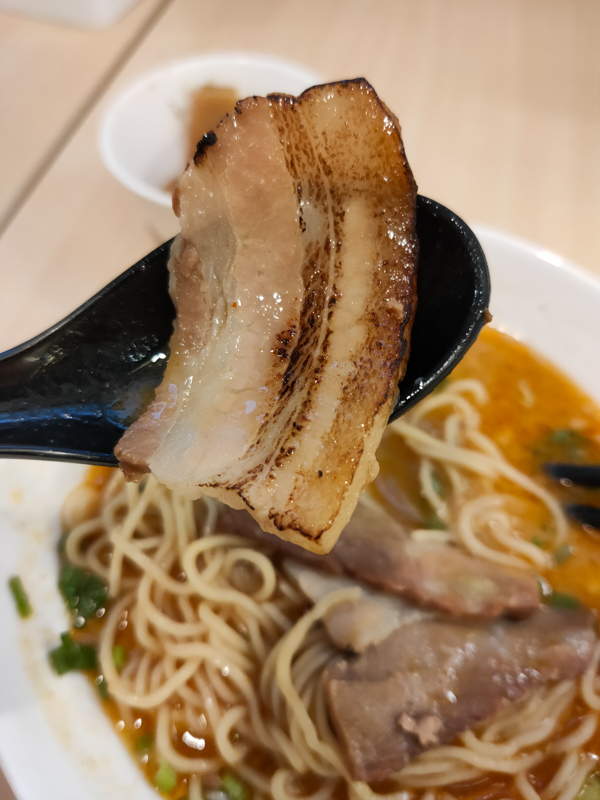


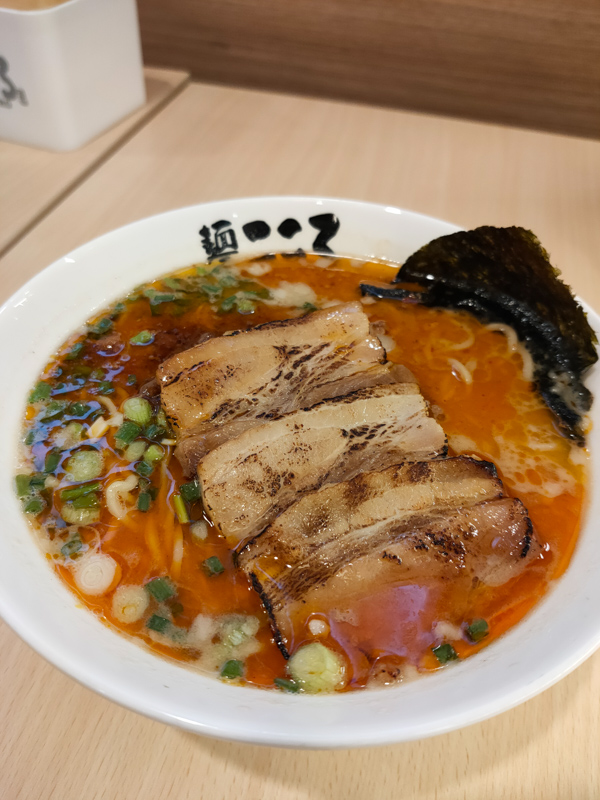
KOKORO TAN TAN MEN 85/100
Noodle – 20/35
The noodles in Kokoro Tan Tan Men have a slight wave to them, and they fall between the thin Hakata and Shoyu variants in terms of thickness. While the taste of the noodles is decent and nothing extraordinary, their thickness complements the flavorful broth quite well.
Soup – 35/35
Notably, the menu features a small chili icon next to this dish, hinting at its spiciness. As I took the first sip, the spiciness gradually made its way back up my throat. Initially, I feared it might be overwhelming, but to my surprise, it wasn’t. Unlike overly spicy broths that numb your taste buds, this one gradually grows on you, revealing different layers of flavor. It carries a delightful kick without being excessively fiery. There’s a subtle, nutty undertone that brings to mind Ippudo’s Karaka-men, and a slight numbing sensation reminiscent of Sichuan pepper. Overall, the spicy base of this ramen is exceptional, providing a multi-dimensional experience.
Meat – 20/20
Although it’s not mentioned on the menu, it seems that the choice of meat cut in this dish is belly. Belly cuts can be hit or miss, often becoming too chewy and tough if not prepared properly. However, the belly in Kokoro Tan Tan Men is cooked to perfection—slightly chewy and tender, enhancing both the texture and flavor as you savor each bite.
Topping – 10/10
The eggs served with this ramen are a highlight. They are perfectly cooked with a gooey, runny yolk and just the right amount of marinade, without any overpowering residual taste of Mirin or sake. The eggs are truly exceptional. The additional toppings such as negi (spring onion), seaweed, and other garnishes are pleasant extras, but the star of the show is the generous amount of minced meat scattered at the bottom of the bowl. This element, reminiscent of Ippudo’s Karaka-men, adds a delightful spicy kick to every spoonful. With each sip, you’ll find yourself craving another bite of the tender, flavorful meat. The larger meat chunks contribute to a satisfying experience, making it tempting to lift the bowl and relish every last drop of the broth.

HOJUN TONKOTSU RAMEN 75/100
Noodle – 20/35
Similar to the previous dishes, the noodles used in Hojun Tonkotsu Ramen appear to be the same.
Soup – 25/35
The broth in this ramen is on the thinner side and lacks a rich and consistent flavor. While the overall concept is promising and incorporates some interesting elements, it falls short in terms of taste and thickness. The black variant includes a garlic sauce that adds a distinct flavor, along with noticeable bits of black pepper. The combination of burnt garlic and black pepper creates a unique profile, setting it apart from typical “Black Tonkotsu” ramen variations.
Meat – 20/20
As mentioned before, the meat in this dish offers a flavorful experience that intensifies as you chew.
Toppings – 10/10
Similarly, the toppings remain consistent with the previous reviews. The eggs are perfectly prepared with a gooey, runny center and a well-balanced marinade that doesn’t overpower the dish. While the negi (spring onion) and black fungus are unremarkable, the standout element here is the Menma, or bamboo shoots. Often, ramen places struggle with bamboo shoots that have an unpleasant smell or a fibrous texture that lingers in your mouth. However, the bamboo shoots at Hojun are surprisingly enjoyable to chew on, offering a slight lingering sweetness. Even for those who are not fans of bamboo shoots, these ones are worth savoring and may leave you craving for more.
POINT TO NOTE
It’s worth mentioning that Menya Kokoro is renowned for its Mazesoba, a dry version of ramen that can be likened to the Singaporean dish Bak Chor Mee. However, our preference leans more towards the soupy ramen, so we have yet to explore their Mazesoba offerings. It’s somewhat comparable to visiting a famous Chicken Rice shop and opting for Charshu Rice instead. Nevertheless, the soupy ramen we have sampled at Menya Kokoro has impressed us enough to stand alongside our favorite ramen brands.
DISCLAIMER
One man’s meat is another man’s poison.
Find out more about our palettes and how we evaluate our ramen here. 😉


4 Comments